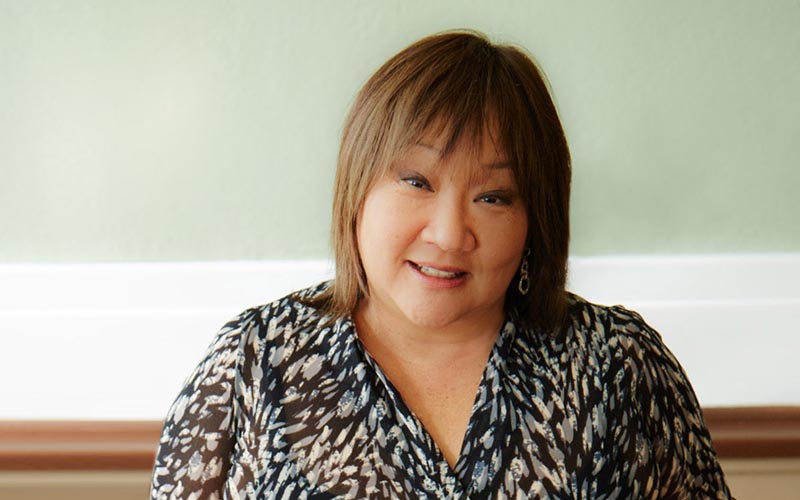Linda Miki fosters a ‘resilient and forward-thinking firm’
In 2022, Linda Miki was named the first woman CEO of interdisciplinary design firm G70.
Miki, who also is vice chair of the firm, began working at G70 in 1989, just two years after graduating college.
“It’s been a place of growth, learning and leadership for me,” she said in emailed responses to questions from Pacific Business News. She ultimately became the youngest associate, and, in 1997, the youngest principal. “My journey from a young intern architect to leading the firm as its president in 2008 and more recently, CEO and vice chair, reflects the immense opportunity that G70 offers its employees and the nurturing environment we’ve cultivated.”
As CEO, Miki — who grew up in Kapahulu and went to Kaimuki High School — leads a team of more than 100 architects, planners, designers, engineers and support staff. Approximately 25 people report to her directly, although that number varies by project.
What interested you in a career in architecture?
Architecture blended my love for math and drawing. I appreciated how it allowed me to explore both analytical and creative elements. The profession’s blend of problem-solving, creativity and its impact on people’s lives and environments resonated with me. Working on real projects, seeing designs come to life, and understanding how architects help to shape communities and enhance experiences in tangible ways fueled my passion.
Throughout my career, I’ve had opportunities to work on a diverse array of projects. From master planning resorts to adaptive reuse renovations, I’ve learned that in architecture you are a lifelong learner. Each project presents unique challenges, opportunities and has an impact in our communities; this dynamic nature of architecture is what keeps my curiosity alive.
How does your role as CEO differ from the time you spent as president at G70?
My tenure as president of G70 was characterized by a focus on day-to-day operations, project management, and the immediate needs of the firm. It involved a hands-on approach to leading projects, ensuring client satisfaction and managing our team’s workflow. Transitioning to the role of CEO marked a shift towards a more strategic and visionary focus. As CEO, my responsibilities are centered on the long-term health and direction of the firm. This involves setting strategic goals and systems, exploring new markets and services, and leading the firm’s adaptation to changing industry trends and challenges. It’s a broader perspective looking at where the firm is heading and how can we continue to evolve. Both roles are crucial, but as CEO, the focus is on building upon our achievements to foster a resilient and forward-thinking firm.
What is your leadership style?
I think leadership is about facilitating success and unlocking the potential within each individual and the firm as a whole. I believe we are stronger together and I do my best to be a servant leader supporting our teams to excel with their gifts and talents. I aim to foster an environment of mutual respect and aloha, and care for one another like a family where everyone feels affirmed. I also want everyone at G70 to feel like they have license to innovate, share and collaborate, because those are essential components of successful projects and a healthy workplace culture.
What is the biggest challenge you’ve faced in your career and how did you overcome that?
The most significant challenge in my career occurred during the 2008 economic downturn, a period that tested our organization’s resilience, adaptability and commitment to our values. I had just become the president of the firm that year, and the architectural industry was hit hard. After making cuts to our leadership’s salaries, we had to implement layoffs to preserve the firm’s future. Each decision I made impacted the lives of our G70 family, so it was incredibly hard to navigate through that period.
Our leadership team prioritized transparency and empathy, understanding that the way we handled the situation would define our character and culture. We decided on a single, substantial reduction in staff, rather than staggered cuts, to avoid prolonged uncertainty for everyone. This approach, though painful, allowed us to help prepare those leaving for their next steps. … For those who remained, we focused on rebuilding morale and fostering a sense of security and unity.
Overcoming this challenge taught us invaluable lessons – mainly, the importance of leading with compassion. We emerged more cohesive, aware of our collective strength and better prepared for future challenges.
What advice do you have for other women interested in a career in architecture?
Go for it! Women are great connectors, organizers, natural multitaskers and problem solvers. Architecture is a fun career of creativity and puzzle-solving. There are many more women in the design and construction industry now. It is a great time to be in the industry. While some women may be concerned about “the balance of life,” with new technology, work-from-home capabilities, and a supportive spouse and office, it’s an achievable and rewarding career. Seeing the joy of people experiencing the places and environments you help to create is priceless.
